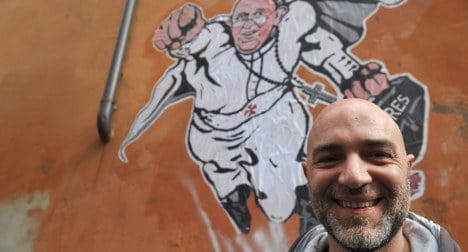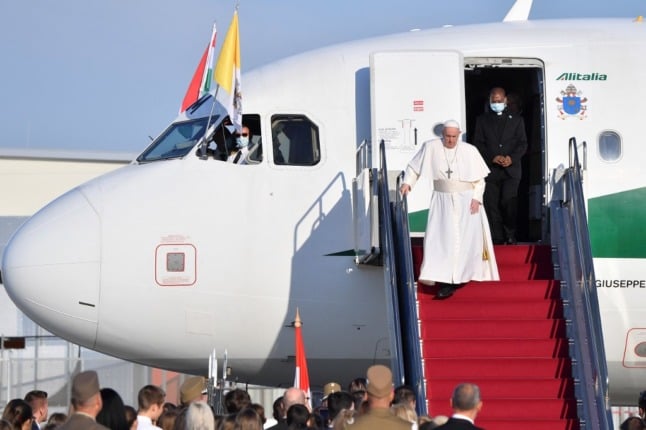Who is Mauro Pallotta and why is he in the news?
Until Tuesday this week, Pallotta, 41, was a relatively unknown artist. He has been working in Rome for 15 years, but hit headlines when one of his pieces, a spray-painted image of Pope Francis as a superhero, was tweeted by the Vatican and went viral.
The image appears on a wall in Rome's Borgo Pio district, near Saint Peter's Square, but Pallotta says he doesn't consider himself a 'street artist' – he also makes paintings and sculptures.
What does the graffiti show?
It is an image of Pope Francis with his fist pointing out in front of him in a Superman-like pose. He is wearing his crucifix and 'valores', the Latin word for 'values', is written on his black bag.
The artist explained that he tried “to respect the clothing that he always wears” by depicting the Pope in “simple shoes, a black bag and iron cross.”
What were the reasons behind it?
Artist Mauro Pallotta said in an interview with the Catholic News Agency that his art aimed to show how the Pope is “ is one of the few people who, having a real power, as a pope, uses it for the good.”
The briefcase represents the “Christian values that he carries… he doesn’t carry anything else. He only carries Christian values.”
Pope Francis has received a series of accolades in recent months, from being Time Magazine's Person of the Year to appearing on the cover of Rolling Stones magazine, for his open-minded attitude and commitment to reforming the Church.
Pallotta also pointed out the football scarf shown in the picture, coming out of the bag, in the colours of the Pope's favourite team, San Lorenzo.
"This makes him come back to being human” he said. “So he is a superhero, but with that little scarf, he reminds everyone that, above all, he is first human.”
The Pope is an avid supporter of the Argentinian football team, who came to visit him shortly after his birthday.
What did the Pope have to say about the artwork?
The graffiti received approval from the Vatican, which posted an image of the graffiti from its official Twitter account, with the caption, 'We share with you some graffiti found in a Roman street near the Vatican'. The photo has since been retweeted over 2,500 times.
How has Pallotta reacted to the global coverage?
Pallotta is proud of his painting, saying, "I think this is his perfect portrait. I don’t know, but that's how I see it.”
However, when asked about the picture's global coverage, he seemed unaware, replying, “I still haven’t noticed that. Has it really gone worldwide?”
But graffiti is illegal in Italy – won't he get into trouble?
No, because it's not painted directly onto the wall. Pallotta drew the image on drawing paper first, before gluing it to the building.
“I did not want to interfere directly with the color of the building,” he said, explaining that he came up with a way of doing it which was removable.
"It will be protected a little bit [from the weather], but it will not last long.”
As for the original copy of the drawing, Pallotta said, “I would like to donate it to Pope Francis.”
Don't miss a story about Italy – Join us on Facebook and Twitter.



 Please whitelist us to continue reading.
Please whitelist us to continue reading.
Member comments